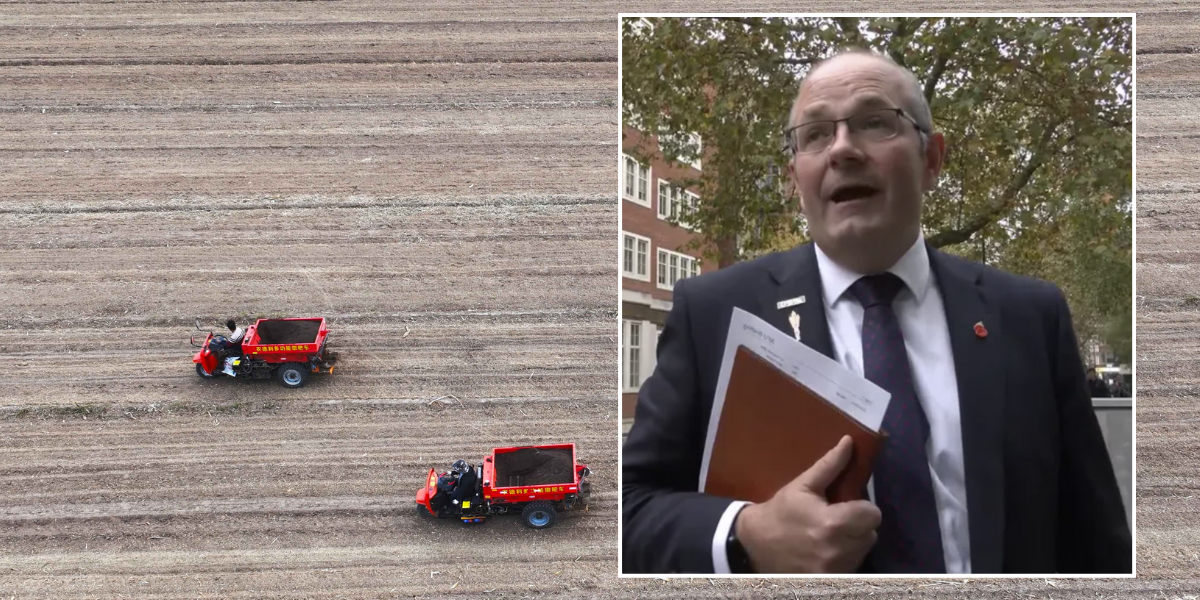Almost a third of children in parts of England are obese by the time they start secondary school, figures revealed today.
Thirty-one per cent of Year 6 pupils in Knowsley, Merseyside, are classed as obese — more than twice the levels logged in leafy areas such as Surrey and Richmond-upon-Thames.
Nationally, the rate stands at over a fifth, a slight drop on last year but still higher than the figure recorded pre-pandemic.
Waistlines also rose among children in reception, with the proportion of four and five year olds deemed obese hitting one in ten.
Health officials today labelled the figures ‘concerning’ and warned that the NHS ‘cannot solve’ Britain’s childhood obesity crisis ‘alone’.
The figures come from the National Child Measurement Programme (NCMP), which involve measuring the height and weight of more than a million children every year.
The obesity rate among 10 to 11-year-olds fell to 22.1 per cent in 2023/34 from 22.7 per cent in 2022/23.
Meanwhile, the proportion of youngsters deemed either overweight or obese also dipped, from 36.6 per cent to 35.8. Both measures are above pre-pandemic levels.
But when broken down by local authorities, data showed 30.7 per cent of Year 6 pupils were obese in Knowsley.
This was followed by Wolverhampton and the London borough of Barking and Dagenham with rates of 30.2 and 29.5 per cent respectively.
By comparison, the figure stood at 13.8 per cent in both Richmond-upon-Thames and Wokingham and 14.3 per cent in Surrey.
Among children in reception, 9.6 per cent were considered obese in 2022/23, up on the 9.2 per cent in the previous year, according to NHS Digital.
When the number who are deemed overweight was also included, the share stood at 22.1 per cent.
This was up 0.8 per cent on the previous year.
One in seven reception-aged children aged four and five (14.1 per cent) were considered obese in Hartlepool and Middlesbrough — the worst hit areas.
This was followed by Sandwell (13.5 per cent) and Blackpool (13.4 per cent).
Over a million children had their height and weight measured under the National Child Measurement Programme (NCMP). Nationally, the rate among children in Year 6 stands at over a third, despite having fallen slightly since Covid began
For comparison, just 5.5 per cent were obese in Wokingham and 6.4 per cent in Cambridgeshire.
Childhood obesity has been a growing issue for years, with easy access to fast food, more screen time and sedentary lifestyles blamed for spiralling rates in some parts of the UK.
The NCMP was established in state-funded schools in England in 2006 and was considered a key element of the former Government’s war on childhood obesity.
It measures the height and weight of children which are then used to generate a Body Mass Index.
This is compared to a national scale to determine whether that child is underweight, normal, overweight or obese.
But in 2022, researchers from Queen Mary University of London warned the programme may do more harm than good and potentially encourage eating disorders in kids.
Parents of slim children have even complained about their kids wrongly being labelled fat.
Professor Simon Kenny, NHS England’s National Clinical Director for Children and Young People, said today: ‘These latest figures continue to concern me as they show almost one in ten children are now classified as obese in their first year of school.
‘Obesity can have a major impact on a child’s life — it affects every organ in the body and is effectively a ticking health timebomb for the future by increasing a child’s risk of type 2 diabetes, cancer, mental health issues and many other illnesses.
‘The NHS is committed to helping young people and families affected by extreme weight issues with tailored packages of physical, psychological and social support, including our 30 specialist weight-loss clinics spread across the country to ensure that every child can access support if they need it.
‘But the NHS cannot solve this alone and continued action from industry, local and national government, and wider society together with the NHS is essential to help create a healthy nation.’
Labour ministers have pledged to introduce tight restrictions on advertising junk food, alongside a ban on children being able to purchase sugary, high-caffeine energy drinks.
The Local Government Association today said cash raised from the soft drinks sugar tax should be targeted at areas with higher levels of deprivation, child obesity and tooth decay.
It said the tax has raised £1.9 billion since it was introduced in 2018, ‘yet councils are increasingly concerned about where the money is being spent’.
It also wants the tax extended to include milk-based drinks such as milkshakes, and high-sugar coffees as well as high-sugar items like cakes, biscuits and chocolate.
It comes as the World Health Organization last year also revealed 37million children under the age of five are now overweight globally — four million more than at the turn of the century.
Australia ranked second in the table of 198 countries, with 21.8 per cent of children there classified as overweight.
Britain was 22nd (11.3 per cent), while the US claimed 52nd spot (7.9 per cent).
Obesity doesn’t just expand waistlines but health care costs, with the NHS spending an estimated £6.1billion annually on treating weight-related disease like diabetes, heart disease and some cancers.













